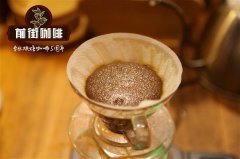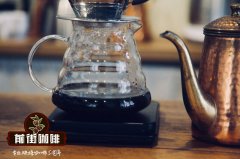How to drink Ethiopian coffee and such a ceremony? how to drink Ethiopian coffee?

Professional coffee knowledge exchange more coffee bean information please follow the coffee workshop (Wechat official account cafe_style)
Ethiopia is the origin of coffee, wild coffee plants, still growing in Kaffa in the southwest of the country. In Ethiopian, coffee is called "buna", which means "bean", and coffee red fruit is called "kaffa bunn".
There are four ways to remove coffee beans from red fruit: sun, half-sun, water washing and water washing. In the early years, Ethiopia adopted almost all the sun treatment, but this year it has mostly switched to water washing treatment.
For hundreds of years, Ethiopia began a coffee-sharing ceremony (Buna), a tradition of entertaining guests to enjoy coffee, and Ethiopians still follow the ancient method today. In the office, due to time constraints, a cup of prepared coffee is provided, but it is the same to show welcome or respect. Be sure to accept it, even though you're just drinking.
An invitation to attend coffee etiquette is an expression of friendship and respect. When the guests come to visit, first of all, the hostess herself bakes fresh coffee beans on an iron plate. Keep stirring the coffee beans on the iron plate, a few minutes later, the beans appear light brown, leave the fire, at this time, the room is full of coffee fragrance.
After being ground, the roasted coffee beans are put into a pot and boiled with water, sometimes with spices such as cardamom and cinnamon. The hostess pours the first boiling coffee into a small cup without handle, sometimes adding sugar and giving it to the guests to sip. The cup must be taken with both hands. Ethiopian coffee is very thick, unfiltered, most of the residue will be left at the bottom of the cup, it is inevitable to drink some suspended coffee powder. Although Ethiopian coffee drinking etiquette is not as exquisite as Chinese drinking elderly tea, it has a general taste, especially the aroma of coffee in the room.
According to the unwritten rules of the ceremony, each person must accept at least three cups of invitation, because one, two and three represent Abole-Berke-Sustga. In particular, the third cup is considered to be a blessing, a cup of berekha.
Related recommendation: flavor characteristics of Ethiopian coffee producing area _ Ethiopian Yega Xuefei boutique coffee
Important Notice :
前街咖啡 FrontStreet Coffee has moved to new addredd:
FrontStreet Coffee Address: 315,Donghua East Road,GuangZhou
Tel:020 38364473
- Prev

What's the story of Ethiopian coffee? the story of Ethiopian Coffee and Starbucks
Professional coffee knowledge exchange more coffee bean information please follow the coffee workshop (Wechat official account cafe_style) Starbucks, which has been the king of the world in recent years. To become a well-known fashion brand, in order to arouse the recognition of more consumers with the power of consumption, Starbucks proposed a commitment to the producing area of caffeine (Commitment to Origins; referred to as CTO) in 2003, and promoted
- Next

Why Ethiopian coffee is so popular the history of Ethiopian coffee tells you
Professional Coffee knowledge Exchange more information about coffee beans Please follow the coffee workshop (official Wechat account cafe_style) there are many reasons why coffee in Africa, especially Ethiopian coffee. Ethiopia's coffee industry is steeped in a rich blend of history, tradition and facts with historical fiction. From the story of Caldy and his ant goat to what coffee lovers call Yir
Related
- How did the Salvadoran coffee industry develop in Central America?
- What exactly does the golden cup extraction of coffee mean?
- The Origin of Coffee flower
- [2023 Starbucks World Earth Day] there are more meaningful things besides free Starbucks coffee!
- What kind of coffee is there in Spain? 9 Flavors of Spanish Coffee
- Aromatic African coffee| Kenya's coffee culture and historical production area
- Liberica Coffee Bean knowledge: the characteristics of Liberian Coffee beans of the three original species of Coffee beans
- The origin and formula of Spanish latte introduces the taste characteristics of Bombon coffee in Valencia, Spain.
- How to adjust the solution of over-extracted coffee
- What is the tasting period of coffee beans? What is the period of coffee and beans? How should coffee wake up and raise beans?

